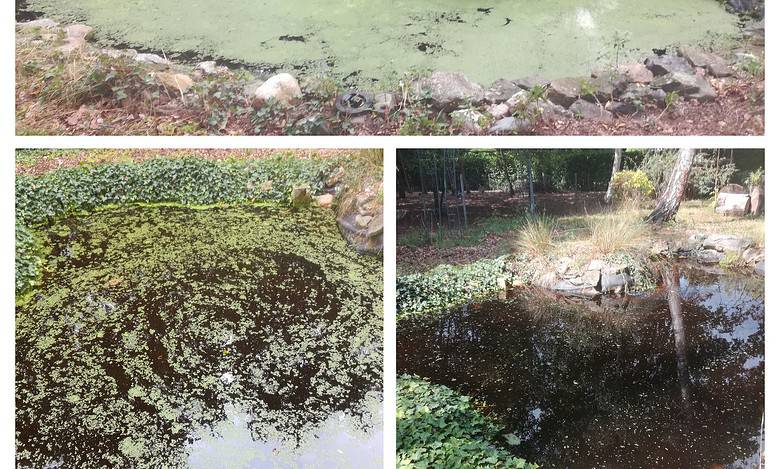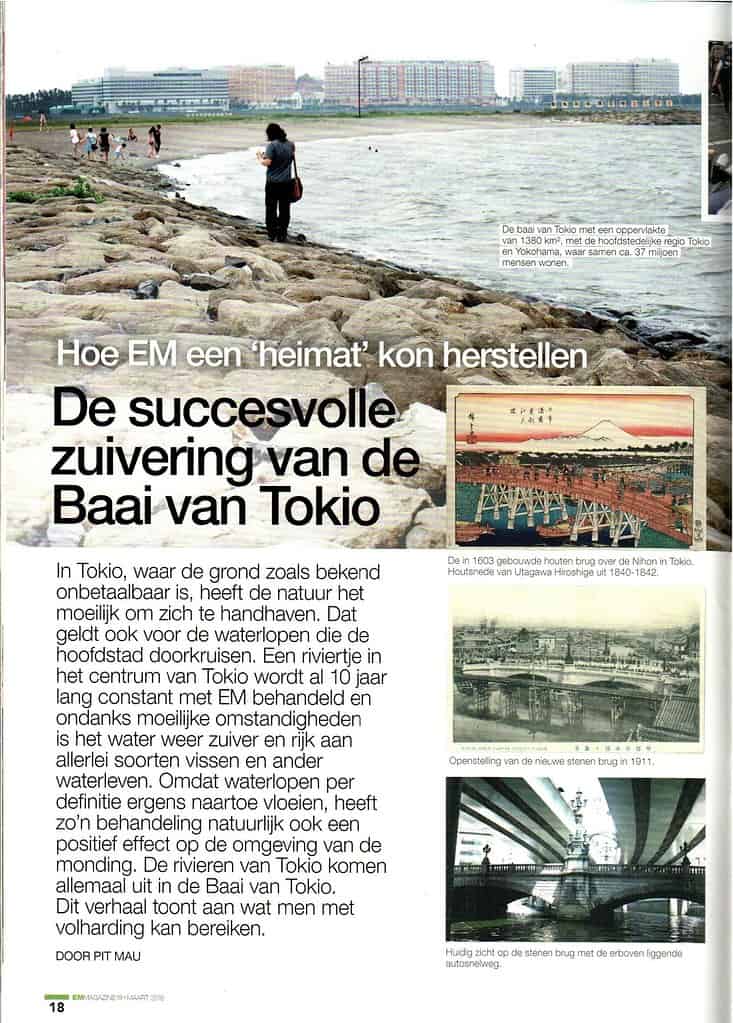
Water in the garden is wonderful and healing for the soul. According to the Fengshui teachings, it can also perform miracles in the right place, but that is fodder for another post.
My own pond was a blessing and a curse. Standing water under the trees. I had completely emptied it and removed all the dead leaves. Naturally, the pond filled itself with rainwater. Great anyway.
Only the pH value of rainwater is ideal to give free rein, especially duckweed and algae. Duckweed is very nutritious for chickens. But completely aside. Then I got a tip.
Bokashi can be made simple and effective in almost any location. It hardly requires any investment. Centrally collecting from larger regions as well as distributing the material over larger regions is no longer necessary to cover the investments. A major advantage of this is that much less transport movements are required for both the supply and removal of organic material. This also serves all of our environment.
J. Feersma Hoekstra
Would you like a little more scientific explanation? Then click here .
A clear pond in 1,2,3…
But the proof of the pudding is in the eating. Here you see the miracle before and after of my own pond and that in 4 days time.
I am eternally grateful to Claude Deknudt of Bio Solutions . No nonsense, lots of explanation and …. It works.

Innovative farmers who want to get rid of their slurry without having to pay for it build large ponds and dump the slurry into the water and this makes the duckweed grow tremendously. They then use that duckweed as food for their livestock.
In other words, duckweed grows with too much food in the water and that excess food has to get out. Effective Microorganisms are really a very good means for this. It is a mix of 82 different micro-organisms that can live together and also reinforce each other.
So together they are better than apart.
1. Our Effective Microorganisms do 3 things:
– they digest the organic material present in the pond and in this way eat the food for the duckweed.
– they expel the germs and parasites
– and they are very healthy for the fish and the plants grow better
Gradually, the duckweed will disappear due to a lack of nutrition.
You work with a biological process and this needs time to give its full effect. So you can fight duckweed with Effective Microorganisms, only you should not have a UV filter, because this kills all life.
If you have a bad microclimate in your pond, a UV lamp will not improve the microclimate. A UV lamp kills both the good and the bad bacteria. By killing bacteria en masse, you do not change the ratio of good/bad, so it is better not to use it.
If we have to continuously disinfect our air, then something is seriously wrong and it is better to tackle the cause.
This massive killing of all life also creates extra decaying organic waste in your pond. Then who will handle all this rotting waste if you kill all the micro life?
The tipping point
We want to point out that as long as you don’t hit a tipping point where the good bacteria outnumber the bad, the 80% undecided bacteria join in with the bad, it won’t work. That way you will not reach a tipping point. You really need that tipping point where the good bacteria outnumber the bad, only then will you get a healthy pond climate.
To represent it mathematically. e.g. in your (swimming) pond you have e.g. 11% bad microorganisms and 9% good ones. Since the undecided 80% join the winner, you have 91% bad and 9% good.
If you now add a little more than 2% of good micro-organisms, you get a tipping point and you have more than 90% good and less than 10% bad and you get a good result.
Because the undecided bacteria will change camp. As long as you don’t reach the tipping point and the 80% undecided don’t join the good ones, you won’t get a good result and you will not be satisfied.
This is a very simplistic representation, but the principle works that way. What the absolute minimum is to reach your tipping moment is different for every pond.
1 liter of Effective Micro-organisms is calculated per 1,000 liters and then you normally have a surplus.
You need 30 liters of Effective Micro-organisms for your pond.
Bokashi pond balls
If your pond is several years old, there is a good chance that there is already a layer of decaying organic waste on the bottom. This waste is a source of nutrition for your duckweed. You will then have to tackle your soil more intensively.
Effective Microorganisms go all over your pond, but will not get rid of thick layers, Bokashi pond balls do. If you go through the layer of organic waste with a stick and air bubbles come up, your pond produces the poisonous methane gas.
This is bad for the fish and the plants, but good for the duckweed. If you have that, then you definitely need Bokashi pond balls. Bokashi pond balls work very thoroughly, but also very locally. A single pond ball takes up approximately 1 m². You should only take this if this layer is a few centimeters thick.
When you have given Bokashi pond balls, you are good for many years.
Clay Binder
The basis for a healthy pond is a predominance of beneficial micro-organisms. The basis for the predominance of beneficial microorganisms is the presence of all 60 necessary minerals.
ClayBinder provides:
1. A favorable pH, KH and GH and for all 60 required minerals. All 60 have an important function. Likewise, man does not feel well if he is missing one mineral.
ClayBinder will supplement the mineral-free rainwater with minerals. You must always supplement your pond with minerals because plants absorb these minerals to grow. Your fish and beneficial micro-organisms also need 60 minerals in the right proportion to stay healthy.
2. It is a flocculant that deposits minuscule floating algae and suspended dust particles, some of which are food for the algae, on the bottom. ClayBinder is colloidal ie so light that it does not sink and it is also magnetically charged and clicks other suspended dust particles together until it becomes too heavy and sinks.
3. It also contains a lot of CaCO3. In the pond this is converted into the vital CO2 for the plants and Calcium. If you have too little CO2 in your pond, your plants will start to show shortages and can die. Algae, on the other hand, appear when there is a shortage of CO2. Apply ClayBinder and the CO2 in the water will rise and algae will disappear and your plants will be healthy again due to the CO2 and the minerals.
Your plants produce oxygen, but need CO2 for this.
ClayBinder (100 grams per 1,000 liters of water) can be administered weekly for the first month and monthly thereafter.
Effective Microorganisms are very effective. In Tokyo, they cleaned Tokyo Bay with it. It was heavily polluted with industrial waste.

